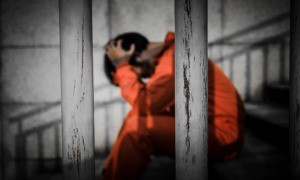***Day number 865 of the Obama administration with no nominee to serve as administrator of the Office of Juvenile Justice and Delinquency Prevention. Day 1,000 without a nominee would come about the time some 2,000 people are in Washington for the OJJDP national conference in October; if that happens, someone should throw … whatever the opposite of a party is.
Robert Ross, the CEO of powerful West Coast grant maker The California Endowment, sent a letter to the White House last week voicing his frustration with the vacancy. It was similar to the May missive sent to Obama and Vice President Joe Biden by a group of 19 Congressmen.
“As a former pediatrician and the head of a health foundation committed to addressing the health needs and challenges of disconnected youth and youth at risk, I am dismayed at the current lack of leadership on these issues at the federal level,” Ross wrote.
The person who seems to be the leading candidate for the job is Jane Tewksbury, who leads the Division of Youth Services for Massachusetts, and her agency continues to see positive trends. The number of juveniles in the custody of the Massachusetts juvenile justice system dropped to a historic low of 730 in 2010, reports Colleen Quinn of the Milford Daily News. The number of juveniles detained before trial has also dropped, from about 300 a day to under 200, Quinn reports.
***The president did chat with a group of teens on Tuesday about, among other things, incarcerated youth. The 10 youths were selected to represent a larger cadre of “100 Youth Roundtables” sponsored by the White House.
***Another Office of Justice Programs nominee officially took the helm this week: Denise O’Donnell was sworn in as director of the Bureau of Justice Assistance. One of her first tasks might be dealing with the 10 percent cut in Byrne Justice Assistance Grants to any state not in compliance with the Adam Walsh Act by late July.
BJA put out an open solicitation for nonprofits looking to serve as training and technical assistance coordinator for the Building Neighborhood Capacity Program, which is part of the White House-led Neighborhood Revitalization Initiative.
The recipient will enter a cooperative agreement for $2 million to assist five neighborhoods with a comprehensive revitalization that can include educational activities and offender reentry programs. Contingent on future funding, the project could extend another two-and-a-half years.
Click here to read the solicitation. Deadline is July 25.
***The Florida Department of Juvenile Justice announced this week that it would be one of four states working with Georgetown University’s Center for Juvenile Justice Reform on the Juvenile Justice System Improvement Project (JJSIP). Oh good, another acronym! We can’t wait to try to remember what a “JJ-Sip” is when someone drops it while talking shop.
The idea of the project is to take one jurisdiction (in Florida, it will be Pinellas County) and assess its juvenile justice system in three different ways:
-Produce an evaluation tool to identify any shortcomings in juvenile programs or services.
-Evaluate how closely those programs or services align with the most prominent research in the field.
-Help identify concrete recommendations for improvement.
Florida certainly has its challenges serving troubled youths. But there are two things in DJJ’s favor: It has a leader in Wansley Walters who is liked by the U.S. Justice Department and the foundation/advocacy world, and the department seems to have a genuine interest in measuring the impact of its actions.
UPDATE: Shortly after we posted, the Center for Juvenile Justice Reform issued a press release announcing all four sites: Pinellas County; Hartford, Conn.; Berks County, Penn.; and Maricopa County, Ariz. Click here to read the announcement.
***OJJDP released a four-page highlight of the 2009 National Youth Gang Survey this week. The general prevalence of youth gang activity continues to be about level – below the peak of the mid-1990s and above the valley of 2001. Perhaps the most intriguing inclusion comes at the very end of the brief:
A majority of respondents report a noticeable effect on the local gang problem when gang-involved individuals return to the community after a period of confinement … NYGS respondents generally observe an effect on local gang issues such as (in descending order of reported importance) violent crime, drug trafficking, property crime, access to weapons, and local gang dress and demeanor.
We’re assuming that means that returning gang-involved offenders increases the enumerated activities; the report doesn’t exactly spell it out.
***The D.C.-based Children’s Law Center produced an interesting webinar called “Trends and Challenges in Juvenile Justice Reform,” which profiled reform efforts in Connecticut, California and Texas.
Click here for the PDF that accompanied the panelists’ presentation; it’s not nearly as good without narration, but it contains some decent information and figures. Look for an upcoming Youth Today piece that will examine, among other things, what went into Connecticut’s recent inclusion of 16-year-olds into its juvenile justice system, and its plans to prepare for 17-year-olds next year.





























